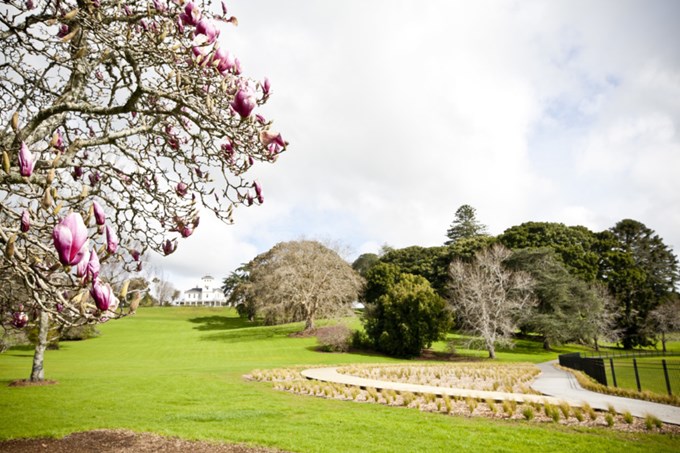An updated version of this article was published on 14 July 2016. Click here to read it.
Kataraina Maki, Auckland Council's General Manager Community and Social Policy, talks to OurAuckland about the council's plan for the future of Monte Cecilia Park in Hillsborough.
What are we doing at Monte Cecilia Park?
In July 2016, the council will begin works to extend Monte Cecilia Park. This will start with the removal of 14 houses that have been purchased over the last 10 years using development contributions specifically for open space.
This land will then be landscaped to enhance the amenity value of the park and to improve access. This work does not relate to Liston Village.
Monte Cecilia Park is used for recreation, including dog walking, and features a collection of historic exotic trees.
Why is Monte Cecilia Park an important asset?
Monte Cecilia Park has significant archaeological, architectural, arboriculture, geological and heritage values.
Like Cornwall Park and Auckland Domain, Monte Cecilia is steeped in Auckland’s early history. It was previously the site of a fortified pā and is also the site one of Auckland’s largest and finest homes, Pah Homestead. Today the homestead is home to the TSB Bank Wallace Arts Centre.
Why are we removing the houses?
The expansion of Monte Cecilia Park is an efficient way to provide increased open space to meet the needs of Aucklanders as the city grows and intensifies.
In 1998, the former Auckland City Council agreed to create a new park (Monte Cecilia Park) in Hillsborough. Since that time, the council has bought 14 residential properties in Hillsborough, Korma and Mt Albert Roads to improve access and visibility into the park. This will help increase use of the park.
It also makes the most of the breath-taking views into Monte Cecilia Park with its gently sloping hills, majestic specimen trees and stately homestead.
What will we use the land for once the houses are gone?
The land will be landscaped and used to expand Monte Cecilia Park.
A draft master plan has been developed by the Puketāpapa Local Board for the long-term development of the park. This will be considered by the board at its May business meeting.
How will the houses be removed?
The houses will be removed through a careful demolition processes. We expect that the majority of building materials will be recycled.
When will the house removal start/end?
House removal will take place from July 2016. The estimated completion date is the end of October 2016 following re-contouring of the land and grass-seeding.
How will you ensure the safety of neighbours and park users?
Temporary fencing will be erected around the sites to protect the public and to prevent access.
Relevant traffic management plans and site safety plans will also be in place.
Neighbours will be notified before works commence and there will be clear signage around the construction zone.
Why aren’t the houses being relocated?
Relocation has been investigated. Building experts have informed council that, due to the age and type of buildings, they are unsuitable for relocation. Many of these houses are brick or are multiple storeys and not in good enough condition to move without compromising the structural integrity of the building.
We expect that 75 per cent of all building materials will be recycled.
Why are we removing houses in the current housing shortage?
The decisions on Monte Cecilia Park date back more than 15 years. At that time there was a need to provide open space for the community. Auckland has grown since that time and pressure on open space, particularly in the central isthmus, has intensified.
The expansion of Monte Cecilia Park provides for the open space needs for Aucklanders, both now and into the future.
What is the process for notifying tenants?
Tenants have been given information about the council’s plans to extend Monte Cecilia Park. The council has now given tenants notices of termination of their tenancy agreements in accordance with the Residential Tenancies Act 1986. The notice period is a minimum of 90 days in accordance with the Act.
What additional support are we offering to tenants?
The council will waive the legal requirement for tenants to give three weeks’ notice when they find alternate accommodation. Tenants can simply provide us with the date in which they will vacate the property.
This ensures that tenants can quickly enter into tenancy agreements when they find alternate accommodation without incurring additional costs of overlapping rent.
The council will also offer references to help tenants secure alternate accommodation and will talk to them about other housing within council’s property portfolio.


